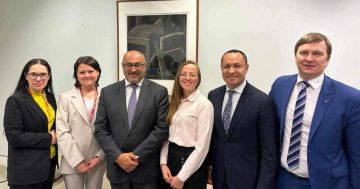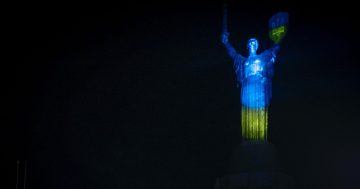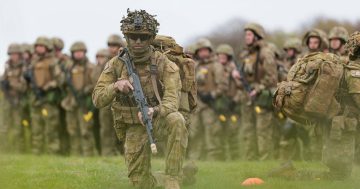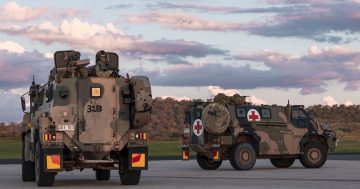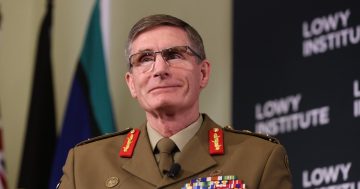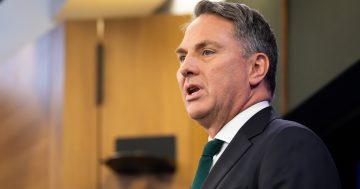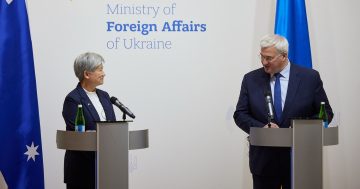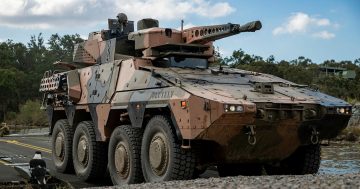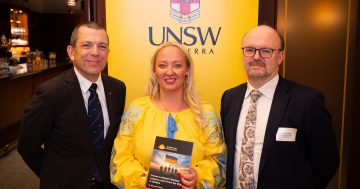As Finland goes through a multitude of political changes, Lasse Sørensen* says its citizens are comforted by a strong military supported by decades of sustained defence spending and widespread public training.
 Finland has a new Government — one of several hefty political changes under way in the northern European country.
Finland has a new Government — one of several hefty political changes under way in the northern European country.
Outgoing Finnish Prime Minister, Sanna Marin, together with President, Sauli Niinistö, initiated Finland’s application to join the North Atlantic Treaty Organisation (NATO) last year, ending decades of military non-alignment.
This was a clear result of Russia’s invasion of Ukraine.
Underneath these heavy changes lies one thing that has remained a constant: Militarisation is Finland’s insurance.
Unlike many other European countries, Finland did not cut back on military spending during times of peace. A look at history tells us why.
Geographically placed in northern Europe between Sweden and Russia, Finland was stuck between western and eastern forces for centuries.
After 100 years of Russian imperialism, Finns seized independence after the October Revolution of 1917.
This led to the birth of a new republic that would clash with its Russian neighbour years later during World War II.
What is still ingrained into the minds of present-day Finns are the stories and experiences from the Winter War.
Just three months after World War II started in 1939, the Soviet Union invaded Finland and its less than four million habitants at the start of winter.
Nearly 26,000 Finns either died or went missing after three months of fighting. After signing the Moscow Peace Treaty in 1940, Finland lost nine per cent of its territory to the Soviet Union.
Russia became a ghost that roams within the collective Finnish mind up to the present day.
If the Nordic country wants to exist, it knows it needs the skills to defend itself.
Helsinki continued to modernise its army throughout the Cold War and beyond. It was simply an insurance policy as the country prepared to build political and economic relationships with Russia after the Soviet Union’s fall.
Professor of Political History at the University of Helsinki, Juhana Aunesluoma said it was hoped that diplomatic exchange would gradually have a positive effect on Russia’s political and societal development, and make it a closer partner to the Europeans.
“Finish policy was to engage rather than isolate Russia, but Finland did not rely on this policy alone. It was matched with heavy investment in defence,” Professor Aunesluoma said.
To prevent provoking the Russian bear, Finland has practiced a policy of military non-alignment within the world order.
This gradually shifted as Finland joined the European Union in 1995 and de facto entangled itself in Western infrastructure.
Finns found it unnecessary to join NATO then, but were prepared to do so should Russia start behaving aggressively.
The alliance is not entirely unfamiliar to the Finnish Army, as it has participated in multiple NATO training exercises and missions along with its Scandinavian neighbour, Sweden, which likewise did not wish to break its many years of neutrality.
With a population of around 5.5 million, Finland finds it vital to engage every layer of society in its defence infrastructure.
A separate military class does not exist. For example, citizens over the age of 16 are offered free voluntary defence training with a local focus.
These courses typically include skill development in first aid and fire extinguishing.
In addition, Finnish leaders from politics, business, Government and civil society traditionally attend the National Defence Course, where attendees receive training in responding to different forms of crises.
It is a given that big companies have discussions with authorities about their potential role during a crisis.
Former Major General in the Finnish Defence Forces, Pekka Toveri said the country learned in World War II that if it wanted to survive as a small nation, it had to use all the resources of its society.
“Considering what a potential attack could do is part of the Finnish mentality. I call it dynamic pessimism,” the former officer says.
“When you build a bridge in Finland, you do it in a way where it is prepared for demolition.”
Successfully defending a nation requires more than good skills. It also takes the right mindset, and numbers suggest Finns have it.
According to a survey conducted by the Advisory Board of Defense Information, 83 per cent of 1,000 respondents said they should arm and defend themselves if attacked, even if the outcome did not guarantee victory.
Formal military training is mandatory for all men in Finland; those who oppose it can do civilian service.
A breathtaking 900,000 people are in the Finnish Reserves, ready to help in any way possible should the Nordic country come under attack.
With Finland as its 31st member, NATO now extends its border with Russia by 1,340 kilometres.
Some might fear the Alliance is now at a greater risk of being forced to confront Russia in the future.
However, lessons learned from the Winter War show that this long border is not a wise move for Russia to invade, as most of it is covered by wilderness.
“If Russia decided to attack up north across the wilderness, Army commanders would pop champagne bottles, because that is exactly what we hope they would do,” Mr Toveri said.
“This is what happened in World War II. The Finns were able to effectively defend themselves because their neighbour was not comfortable moving in the wild.”
As for NATO, the Alliance now has a member that has already met its economic demands.
It is a requirement among NATO’s European members that they devote at least two per cent of their Gross Domestic Product to military activities by 2024.
Finland meets this requirement by investing 2.03 per cent into militarisation.
*Lasse Sørensen is Courthouse News’ Nordic correspondent. He is based in Copenhagen, Denmark and has previously covered the European Union’s aid sector.
This article first appeared on the website of the Courthouse News Service.


